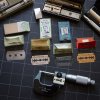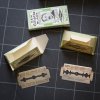This is nothing but a "gee whiz" post devoted to the question of blade thickness as it has evolved from the early days to today. I was drawn to this interest after reading numerous posts that have stated, "today's blades are thinner than yesteryear's blades", and in extension, how that might affect shaving with various razors.
My initial look was comparing a vintage 1927 era Gillette 3 hole blade to a contemporary Personna Super stainless steel blade. The finding? There was no difference.
Original 1927 3 hole carbon steel Gillette blade was .006" (six one thousands inch):
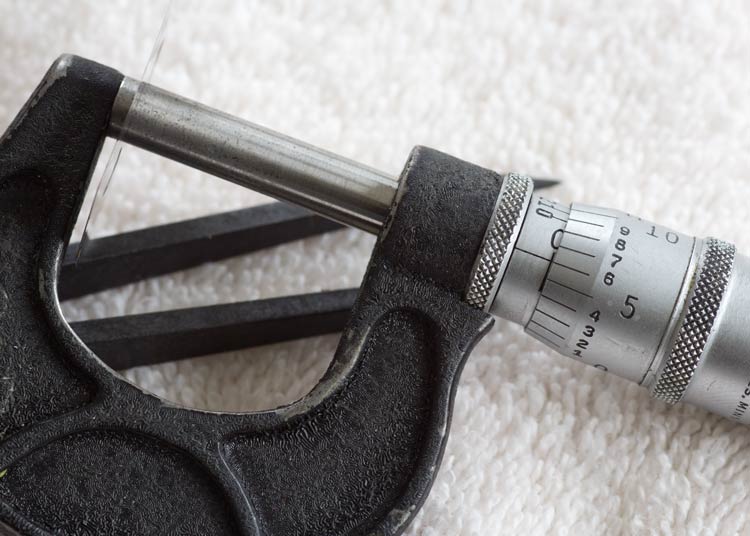
I measured a brand new Personna Super (some call this the "lab blue") and it was exactly the same:
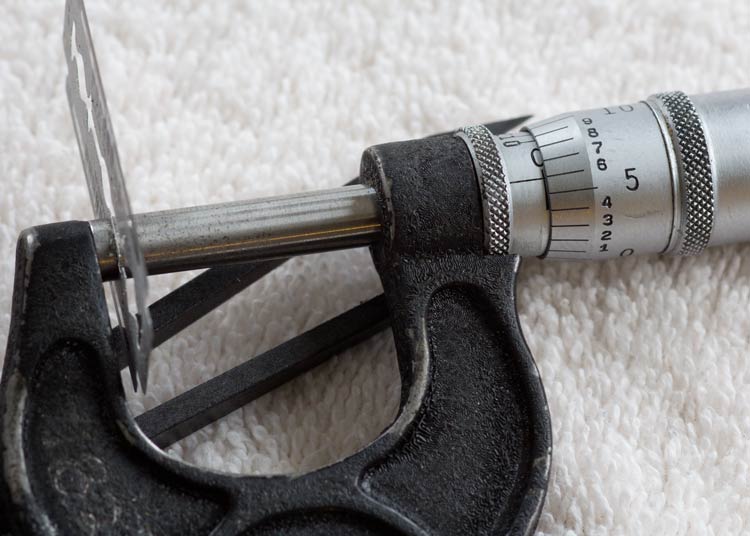
Then I took a look at a Gillette Blue Blade. This was a common blade sold by Gillette well into the adjustable razor era. Its thickness? Same as the original 3 hole blades, .006"
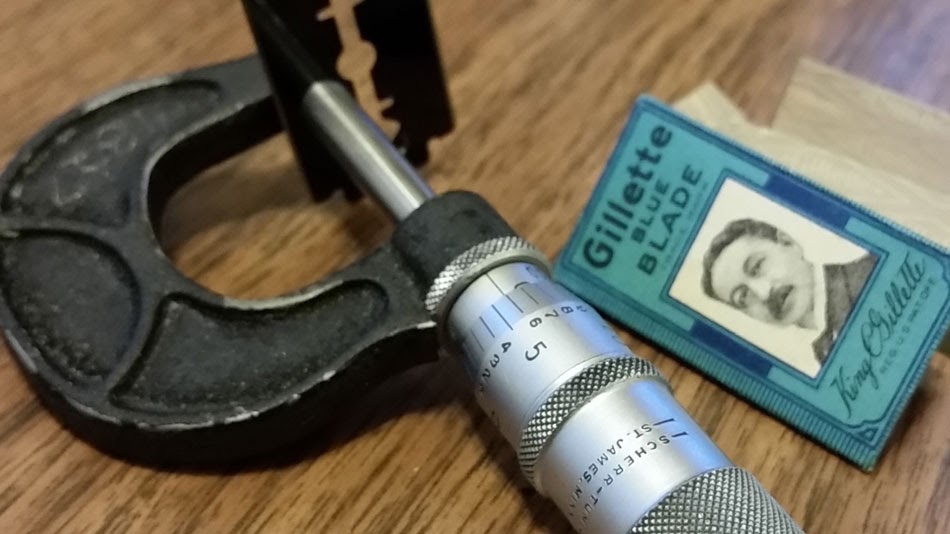
Then I decided to measure a sample of the blades I have on hand. Wow, what a revelation. I discovered that virtually all of today's blades are .002" thinner than the blades of yesteryear! Is this good or bad? Neither as far as I can tell as most razor's easily accommodate such a variation. Nonetheless it was an eye opener.
Gillette "Thin" blade, .004" (four one thousands inch):
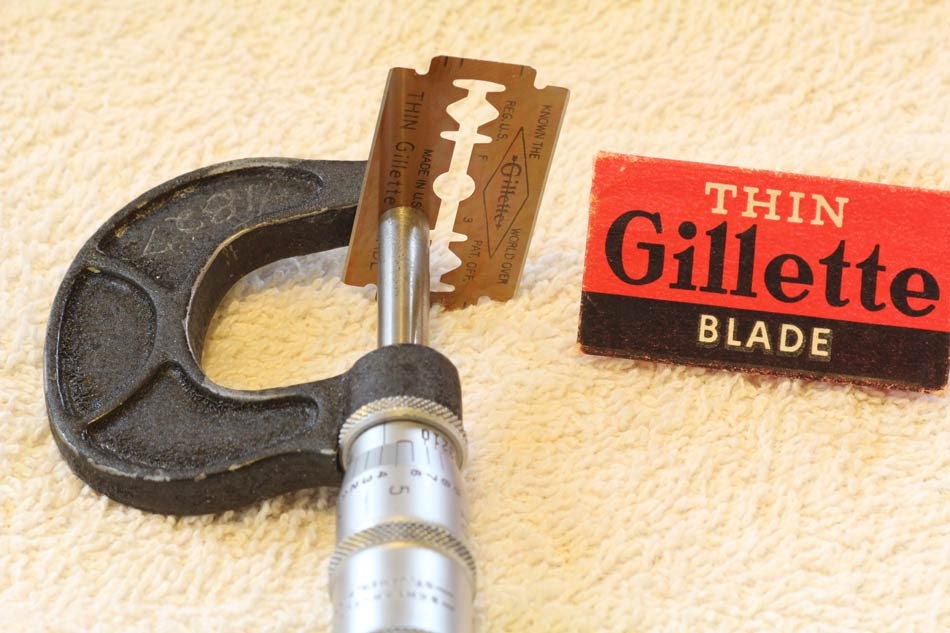
Dorco , .004" (four one thousands inch):
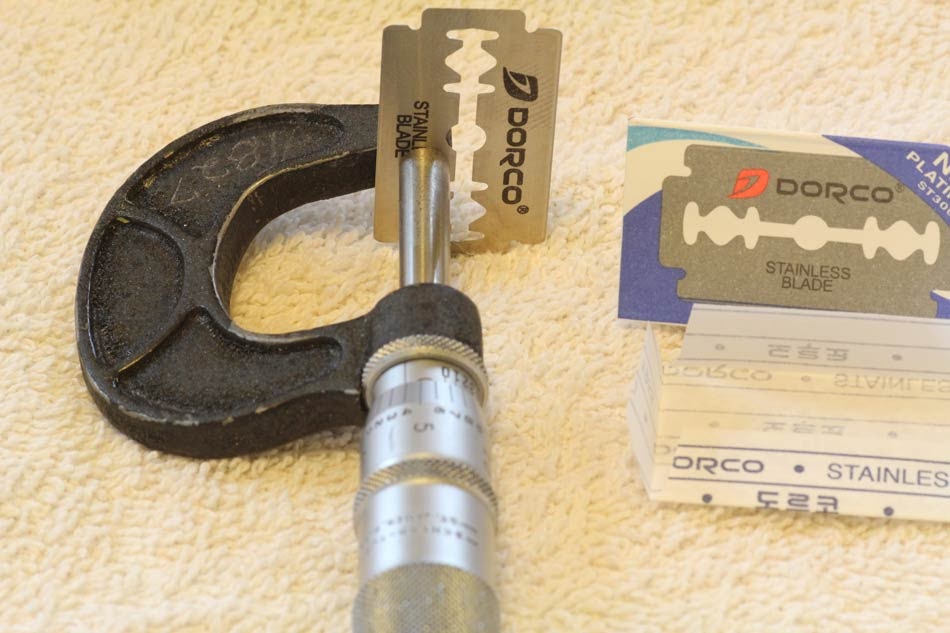
Murker, .004" (four one thousands inch):
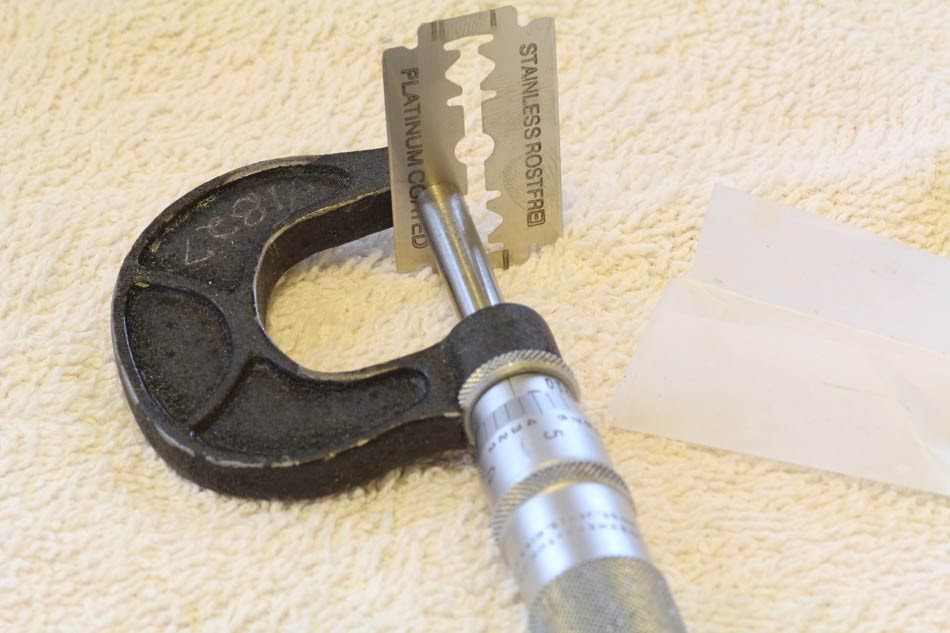
Derby, .004" (four one thousands inch):
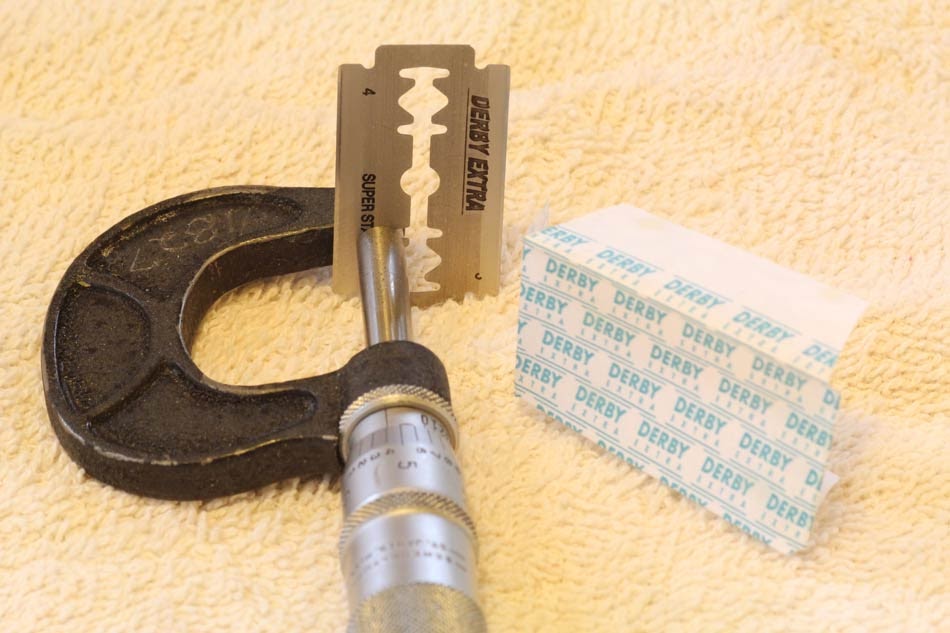
Gillette Silver Blue, .004" (four one thousands inch):
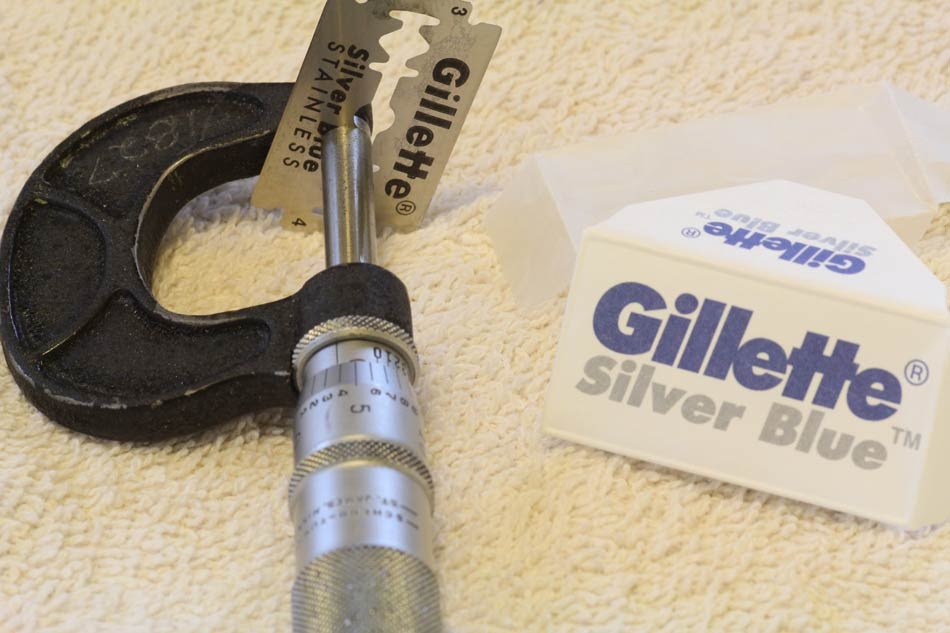
Gillette Nacet, .004" (four one thousands inch):
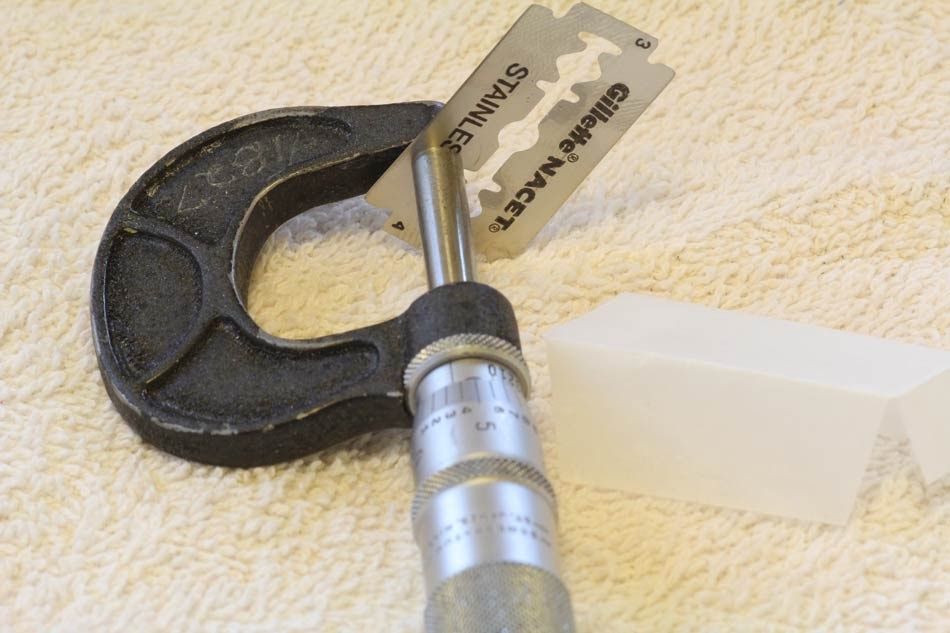
Shark, .004" (four one thousands inch):
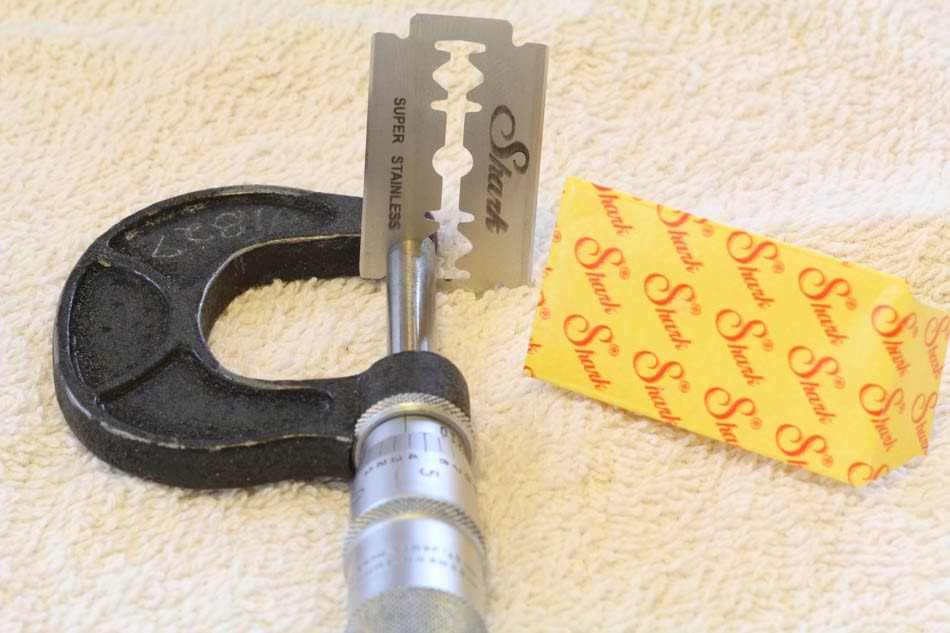
So it appears there has been a definite move toward thinning blades. The purpose? I can speculate, but that's all it is. Presented for your edification.
My initial look was comparing a vintage 1927 era Gillette 3 hole blade to a contemporary Personna Super stainless steel blade. The finding? There was no difference.
Original 1927 3 hole carbon steel Gillette blade was .006" (six one thousands inch):
I measured a brand new Personna Super (some call this the "lab blue") and it was exactly the same:
Then I took a look at a Gillette Blue Blade. This was a common blade sold by Gillette well into the adjustable razor era. Its thickness? Same as the original 3 hole blades, .006"
Then I decided to measure a sample of the blades I have on hand. Wow, what a revelation. I discovered that virtually all of today's blades are .002" thinner than the blades of yesteryear! Is this good or bad? Neither as far as I can tell as most razor's easily accommodate such a variation. Nonetheless it was an eye opener.
Gillette "Thin" blade, .004" (four one thousands inch):
Dorco , .004" (four one thousands inch):
Murker, .004" (four one thousands inch):
Derby, .004" (four one thousands inch):
Gillette Silver Blue, .004" (four one thousands inch):
Gillette Nacet, .004" (four one thousands inch):
Shark, .004" (four one thousands inch):
So it appears there has been a definite move toward thinning blades. The purpose? I can speculate, but that's all it is. Presented for your edification.





